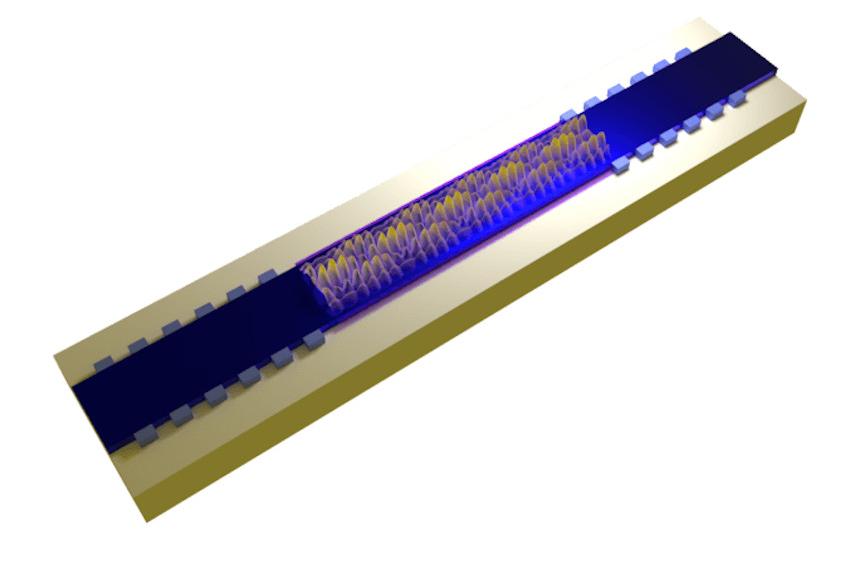Creation of a supermode optical resonator
06.03.2023 - New device is capable of manipulating multiple modes of light.
Researchers in Federico Capasso’s group at the Harvard John A. Paulson School of Engineering and Applied Sciences (SEAS) have developed an optical resonator capable of manipulating light in never-before-observed ways. This result could influence how resonators are understood and open doors for new capabilities. “This is an advance that alters in a fundamental way the design of resonators by using reflectors that convert light from one pattern to another as it bounces back and forth,” says Capasso.
“Resonators are central components in most applications of optics, lasers, microscopy, sensing – they appear in all of these technologies as essential building blocks,” says Vincent Ginis from the Vrije Universiteit Brussel. “They consist of two reflectors that bounce light back and forth, concentrating light in lasers for example, or filtering out frequencies of light such as in fiber optics and telecommunications. Each message, to keep separate from the others, is encoded on its own specific frequency. Resonators allow us to tape off exact, unique frequencies to allow many different messages to be transmitted simultaneously.”
Until now, resonators and the two reflective mirrors inside them controlled the intensity and frequency of light, but not the mode of light, which determines the shape and manner in which photons flow through space and time. Beams of light are also capable of traveling in many different modes, even like spirals. The new optical resonator is the first such device that gives scientists precise control over the mode of light, and even more importantly, enables multi-mode coupled light to exist within the resonator.
The team achieved this by etching a new type of pattern on the surface of the reflectors at each end of the resonator device. “We realized that we could test our novel resonator concept in an integrated photonics platform, and chose silicon-on-insulator, which is used by many scientists and companies for applications such as sensing or communications,” says Cristina Benea-Chelmus from the EPFL Institute of Electro and Microengineering, who spearheaded the experimental part of the work. The etchings, about 300 to 600 nanometers in size, gave the team control over the shape of light beams inside the resonator. Using reflectors with different patterns on either end of the resonator unlocked their ability to change the shape of light as it moves.
“We can make these light modes play with each other, turning one mode into another, and then back into the first mode, creating loops of different light modes moving through the same space,” Ginis says. “When we saw this, we realized we were in terra incognita here.” Combining more than one mode of light creates a “supermode.” “In traditional resonators, as light moves back and forth, the mode is always the same – the properties of light are always symmetric,” he says. “In ours, as light goes from left to right, or right to left, the modes are different. We’ve figured out how to break symmetry inside a resonator.”
“Having multimode control of light will have a huge impact on the bandwidth of information that can be transmitted using light,” he says. “It opens up many channels of transmission that we haven’t been able to access simultaneously until now.” The optical resonator provides a new tool to conduct fundamental physics experiments, including optomechanics, using light to make things move. “By placing an object inside a resonator, you can manipulate materials like tiny atoms, molecules, and strands of DNA,” Ginis says.
The new device, with its supermode capabilities, could unlock new degrees of freedom for researchers to manipulate miniscule materials with different shapes of light beams. “By questioning the foundations of textbook resonator theory, we have discovered completely new and counterintuitive properties of light not found in traditional resonators,” Capasso says. These properties, including “mode-independent resonances and directionally dependent propagation,” unlock unforeseen opportunities for photonics, acoustics, and beyond, he adds. (Source: Harvard SEAS)







